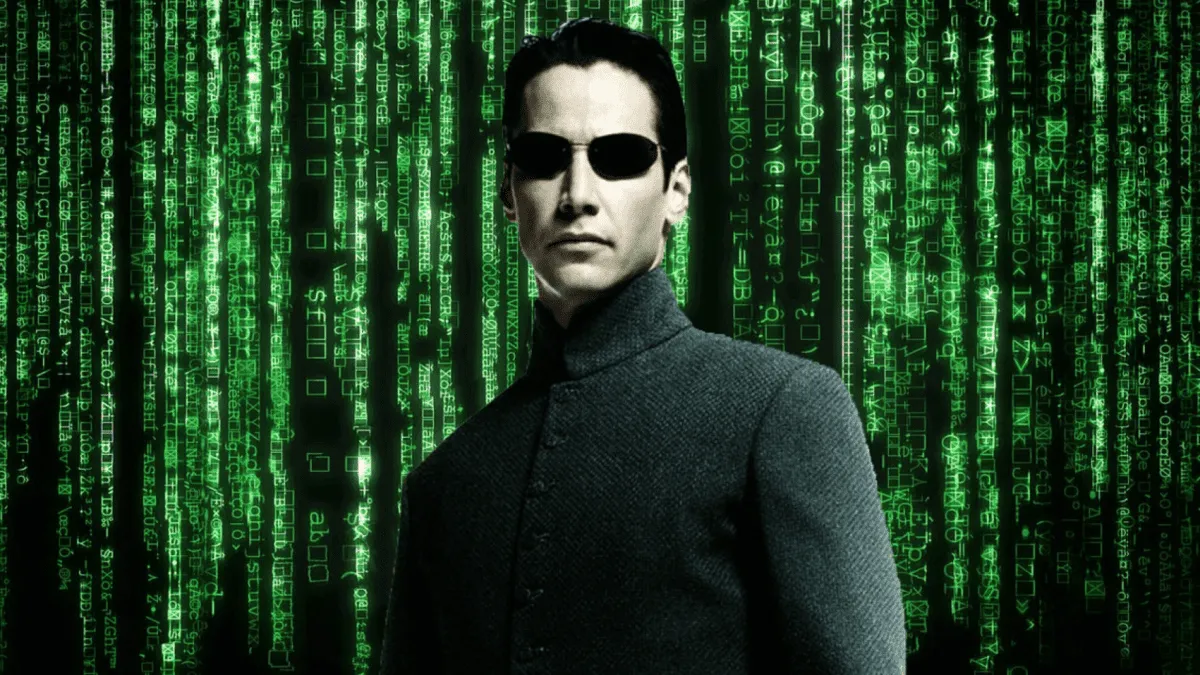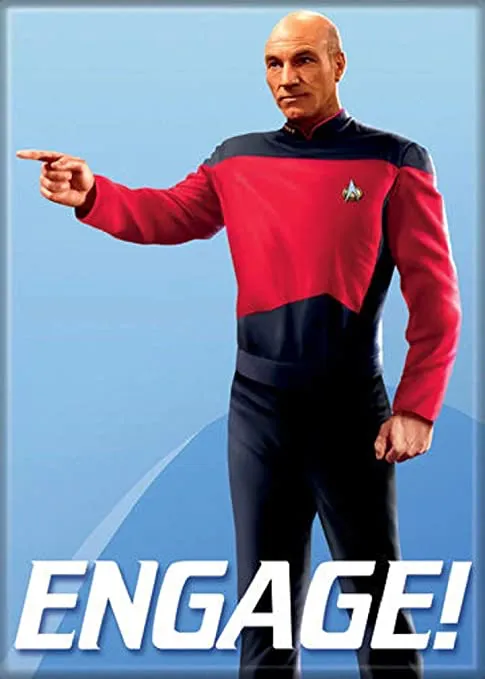3 Rules for Humanizing Your B2B Content Strategy
The way you used to do business is changing.
The way people buy in the B2B world is changing. And they are not susceptible to the same tactics that worked before. So, how is B2B marketing changing? Is B2B marketing getting harder?
Is B2B marketing content boring?
The data is there. According to a 2019 study by WHM Creative, half of the buyers find B2B advertising boring as hell. And a whopping majority believe they'd make better decisions if the content did a better job of engaging them.
B2B products and solutions are more complex than a bottle of carbonated sugar water, but one thing remains the same: people decide what to buy. And in tech B2B, the people who make the decision are now Millennials.
Welcome to the desert of the real…

That's just the wheel of time rotating. It turns out that today more than half of those responsible for purchases of B2B tech are MILLENNIALS. So are half of those in charge of verifying the financials.
But you're probably asking, "Wait a minute, aren't they the same people who ate Tide Pods?" Technically, no. That would be the next generation, but the fact that you still regard millennials as "young" speaks louder than words.
And when you take your time to ponder the situation, you might come to the stark conclusion that you, too, are a Millennial. With a spouse. And children. And a mortgage. And a dog. And a career in marketing!
Yup, time flies.
Let's get back on point. B2B decision-makers want something else because they are making decisions in a new way, and the Millennials are leading the change. They do their own research. They don’t want buzzwords.
They want specifics. They want to be engaged. They want creativity. They want personal connection.
Hence for some time, a storm has been brewing. A perfect storm to sweep the land of marketing to humanize B2B marketing.
But what does it all mean? How to humanize B2B marketing strategy? Here is our take on the matter.
The first rule of humanizing B2B content: Show business empathy.
Your content should be about your customers, not the product. You have to add a human element to your marketing strategy.
Treat your audience as if they were human beings, not an ATM. Connect with them. Show that you understand them by making your content relatable. Let them see themselves in your content. Make it low on key messages and high on insights. Feed their imaginations.
And if you have something to say… lose the jargon and say it clearly. Say it how it is.
Applying business empathy in B2B content can be helpful - click here and check our article!

Current buying trends have the decision-makers research the sh*t out of the topic before letting themselves fall into your funnel and contacting sales.
So imagine having to wade through hours of videos that are dull, indiscernible productions, clogged with precise yet vague information.
They often state the same points over and over in a similar way. Not to mention the white papers, blogs, charts, social media posts, podcasts ad infinitum.
So think about it. You come across yet another piece of content. Maybe, it's even content of your own brand. How would you react?
1. It's the same video you've watched for the past 5 hours.
It looks the same, showcases the same features, uses the same language, and has the same dull elevator music as the dozens of videos before. You hit stop even before hitting the halfway mark. You sigh and move on to the next vendor.
And the only reminder of that encounter is a spreadsheet. Another sigh.
2. After watching similar and dull content, you see something different.
Fresh and exciting. First, the video answers all of your questions. Second, it makes you smile because it's entertaining. You watch more of it, and you have an urge to discover more. Finally, you drive deeper into the offering on their website. The video helped you do your job.
You'll likely remember this brand/product without the help of a spreadsheet.
The second rule of Humanizing B2B content: Use emotions.
Weeeeell, that's a topic that should have its own blog. For now, let's give you the overall idea: Make them feel something. That will make them remember you.
With today's buying process growing more complicated and buying teams getting larger, you need every competitive edge. So why dismiss such a potent and persuasive tactic as emotions?
Buyers usually have to choose between competing solutions with the same apparent benefits and a similar price tag. In this scenario, your brand and how they feel about it is the only real differentiator.
Does your brand make them feel safe? Do they trust you to deliver? Do they like you?
Don't believe us? Talk with your wisest and most successful salespeople about how they win the big ones. Is it because of a killer PowerPoint presentation and an excel spreadsheet? Or is there something more?
There is.
These rainmakers build trust. They build relationships. They master people skills.
That's nothing more than… Emotions. Read this.
Using emotions in B2B marketing strategy doesn't mean you have to make your viewers cry, like when Simba's father fell to his death in "The Lion King"... I still get teared up even when I write this.
Instead, you should make your potential customers feel a connection because they've found a brand that answers their questions and addresses their challenges. They've found a trusted partner.
Why?
Because good content treats your target audience like people and not like faceless corporate cogs. Could you engage them at their level?

The third rule of Humanizing B2B content: Tell a story.
Storytelling, baby! But, what makes good storytelling marketing?
A good story is what you get when you focus on the customer and add emotions. It can be as simple as writing a post on Linkedin and as complex as a Cybersecurity Dungeon & Dragons series :)
In any case, the rules are pretty similar.
Every story has a three-act structure; a beginning, middle, and end. I guess this is common knowledge. However, what might be elusive is that this structure scales.
We divide the first act into three. So, in essence, the beginning has its own beginning, middle, and end. And you go deeper again… and again. Why? To take the audience on a journey. One thing leads to another, and so forth. Each little situation escalates and moves the story forward up to the very end.
The goal is to have a story that flows. Every beginning makes the viewers interested again. Every middle escalates the protagonists' actions to achieve their goals. And in the end, we have a resolution.
We see if the protagonists manage to reach their goal and what consequences they will face in the following situation.
The key element is not to use "AND" while moving between scenes. "AND" doesn't raise the stakes. "AND" is just a list of things. It's not engaging. To make your story interesting, use the BUT/THEREFORE method. You will see your story flow by putting the words "BUT" and "THEREFORE" between your beats.
For example:
Jenny goes to the store for coffee with her dog. BUT the store is out of coffee. THEREFORE Jenny goes to her favorite cafe. BUT her dog breaks off its leash and runs away. THEREFORE she decides to go looking for him in the park… And so on.
That's a surefire way to make sure your story generates drama.
What are the 4 elements of good business storytelling?
But how to take your viewers on a journey in the business world? Use this simple structure, for example. Yeah, I know it's 4 points and not 3. You gotta bend the rules a bit. ;)
- Start with a catchy intro that shows you understand the viewer/reader, the world they live in, and the challenges they face.
- Show them a world in which their challenges are resolved.
- Present the challenges they must face to make it happen.
- And lastly, give them hope with a solution.
To summarize, storytelling = people focus x emotions.
If you want to dig deeper into the storytelling structure, check out this insightful video essay and click here to read about effective storytelling techniques for tech B2B content
BONUS Humanizing B2B content tip according to Black Rabbit
You made it to the end. You deserve a little bonus material. You might feel that this humanizing business focuses more on brand building than sales activation. And I can see why you would think that. So let me address your (or your boss's) doubts with a fresh and sweet study.
Give me a moment while I fire up the quotes laden with percentages by super smart people (link):
"According to a report in Marketing Week, companies change providers of services like banking, legal advice, software, or telecoms around every five years. This means that only 20% are in the market for those services in a given year and just 5% in a given quarter. The other 95% are not in the market at all."
"…Ehrenberg-Bass Institute shows advertising does not work by stimulating customers to buy, rather by building connections to brands in consumers' minds, ready for activation when they have need at a later date."
And that's where humanized B2B can make a difference. That's what it's all about. For us, anyway.
Closing thoughts.
This is a vast topic, and we're standing on the shoulders of giants who have championed humanized B2B for years. So, we'd like to recommend some fantastic reads and listens:
- Humanizing b2b by Paul Cash and James Trezona. This book takes everything people have been saying for years to b2b marketers (unsuccessfully, usually) and condenses it into a trove of wisdom.
- The Marketing Meetup episode w/ Jeremy Connel-Waite of IBM talks about using emotional storytelling in his line of work... with CEOs.
- Llinkedin b2b institute. Like the name suggests, it's an institute. So you can expect excellent research and insights for b2b marketers.
Discover more
Discover other stories about how we helped our clients solve their business challenges







